

Tunisia is the smallest North African country surrounded by Algeria, Libya, and the Mediterranean Sea. This country covers the eastern part of The Atlas Mountains and the northern part of the Sahara Desert. Tunisia covers Africa’s Northeast part, Cape Angela.
During the mid-7th century, the Arab conquerors had converted the local Berber population to Islam. Islamic dynasties had ruled the entire area, and it came to an end in the 19th century.
The average temperature of this state remains around 30 degrees to 45 degrees, depending on the humidity.
French Civil Law has influenced the legal system of this state. According to a report made in 2008, the military count of this state was around 27000. The navy had 4800 personnel along with 154 aircraft and 4 UAVs.
Through the various ports, Tunisia is connected to several countries across the globe. These ports have helped significantly in Tunisia’s economic development and made it one of the most powerful industrial hubs in Africa.
Here are the top 10 ports in Tunisia that you need to take a look at!
Port of Sfax is one of the largest ports in Tunisia and has been helping in the country’s economic growth for a long time. Being one of the oldest ports in Tunisia that has evolved ever since it was founded.
Now, the modern section of the port is considered to be the centre of the nomads. It was founded in 1905 supposedly by the Roman settlements.
This port seems to primarily manage bulk cargoes, including phosphate and its by-products along with cereals and sea salt.
The oil berths are around 200 meters long. The electric crane that is used majorly can carry up to 500 tons per hour.
The old commercial port contains up to 3.7 thousand meters of storage space. Major products imported through this port include olive oil, salt, phosphates, and other products.
The ministry of transport had reportedly taken the initiative to set up a logistics platform in 2020.
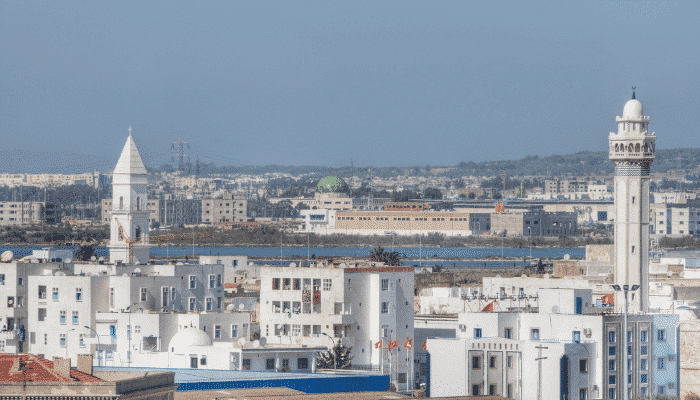

This port is one of the most popular ports in Tunisia, based across the Mediterranean Sea. The port is mainly known for transporting passengers and tourists. The main ships of this port carry cars; bulk cereals, among other essentials. Most of these are either exported to Europe or the United States.
Port of La Goulette was established in 1835. It is located 10 km away from Tunis, the capital of Tunisia, which helps get attention globally.
Around 61000 tourists were registered in 2018 to travel via this port, and around 4.5 thousand cars were transported in 2016.
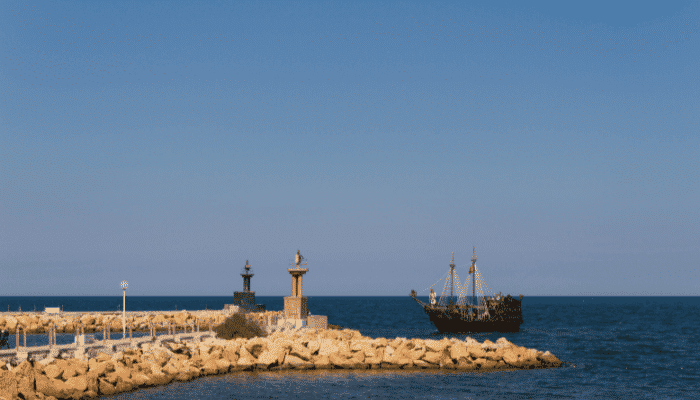

Port of Gabes is an industrial port in Tunisia that aims to transport bulk amounts of sulfur, ammonia, and other phosphate fertilizers.
This port provides around 20% of Tunisia’s trades, and up to 5 million tons of goods are exported and imported every year via this port.
Established in 1974, this port’s main purpose was the reception of sulfur, bitumen, oil, and ammonia.
Around 90% of this port’s traffic is related to industrial receptions. This port is not limited to any particular reception but exports goods, chemicals, tourists and passengers. This port is connected to the major industrial estates of the region by the MC33 highway.
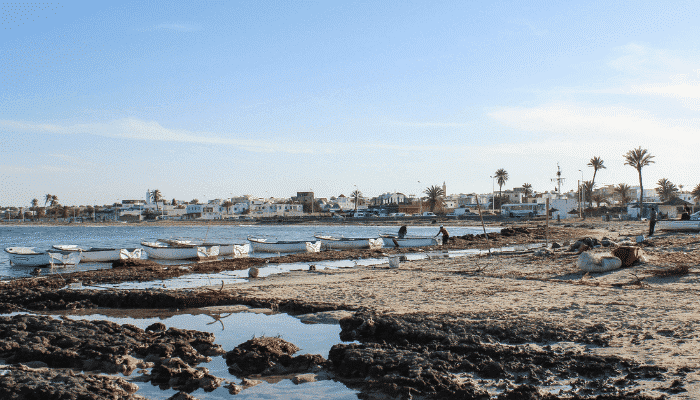

Port of Zarzis is located in the southern part of Tunisia. Major products that are exported via this port include salt, oil, different fertilizers. This port particularly aims at maintaining safety at navigating in the channel. It also encourages more exports and ensures they are secure and safe.
The port of Zarzis is mainly an agricultural and commercial port with up to 140,000 TEUs and around 5,000,000 tons of general cargo in 2018.
It has a good geographic position that helps it traffic over 3,500000 tons.
Port of Rades is one of the terminal specialized ports in Tunisia that provides around 21% of Tunisia’s export trades.
The port handles around 8 million tons of cargo traffic. A turning circle of 300 meters is fitted below the tunnel of the port.
The volume of trade has increased by 5% since his port was founded. It provides 9% of containerized goods, up to 76% of the tonnage of goods, around 76% of container traffic in TEUs, and 80% of traffic in rolling units, along with around 18% of ships’ traffic registered in all ports in Tunisia.
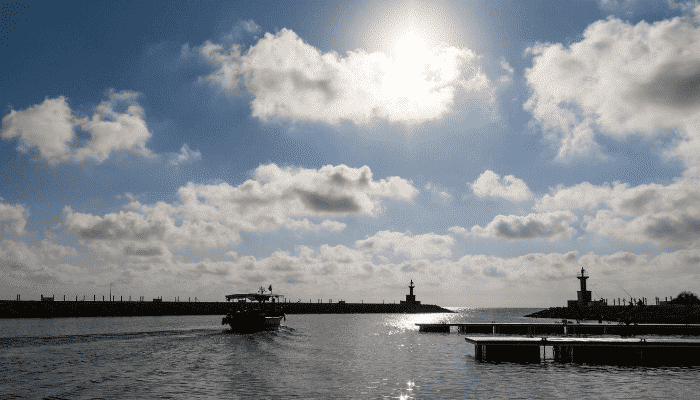

Port of Sousse is located at the exact centre of Tunisia. The length of the entire port seems to be around 820 cm. Apart from the reception of diverse goods traffic, this port also has a high position in contributing to Tunisia’s economic factors by its fishing sectors constitutes. The port is operated by The Group of Handlers of the Center (GMC).
The port is located around 15 km from the international Monastir airport towards the north.
Around 20 million tons of cars were exported in 2019, along with around 850 ships through this port. An average Tunisian seems to consume around 11 kg of seafood per year, reflecting how important fishing businesses are in the region of Tunisia.
Up to 1,700,00 tourists registered to transport in this port, according to the report issued in 2019.
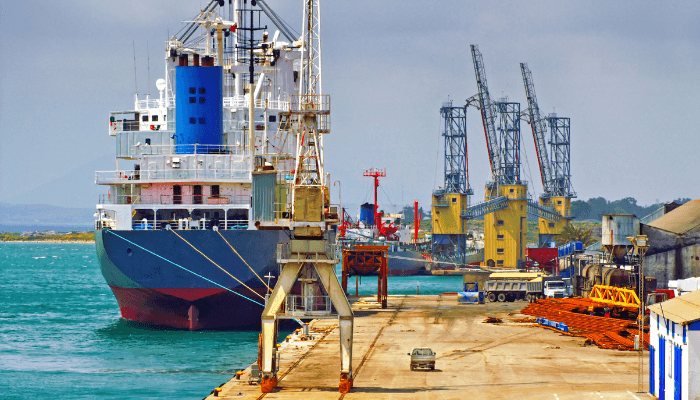

Port of Bizerte contributes the most to Tunisia and Africa’s socio-economic and cultural factors, in general. Its geographical position allows it to access GIBRALTAR-SUE. Its southern part is mainly associated with industrial aspects. The canal port is around 28.8 ha and 12 meters away, while the Sebra bay is 10 meters away (46 ha). Between the two East and West piers, a 610 km breakwater mole is there.
This port handled around 5,207,472 MT in 2018, in import, export, and good transition against 4,864,533 MT in 2017. Main goods that are exported via this port include sugar, cereal, oxy quay, cement plant, etc. This port has around 520 meters of conventional docks and depths ranging from 9.5 meters to 9.8 meters
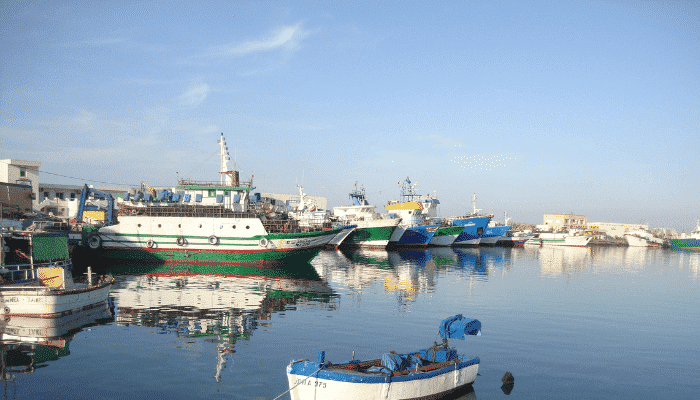

Port of Skhira is one of the smallest ports in Tunisia. However, the contribution it has to the economic growth of Tunisia is huge.
It is a major seaport in Tunisia that aims at handling Algerian and Tunisian petroleum exports.
This port is located around 35 km far from Tunis capital. The major goods imported from this port are crude oil, other refined products, and unloading pipelines.
The exported hydrocarbon traffic in 2018 was around 0.9 million tons.
This is another major port among the ports in Tunisia. This port is located 20 km away from the Menzel-heurr. This port is known for its huge industrial value in the economic development of Tunisia. The major goods exported from this port are fuel oil, deck, water, sugar, diesel, and so on. An indoor, along with an outdoor pool, seems to be there, connected by a circle.
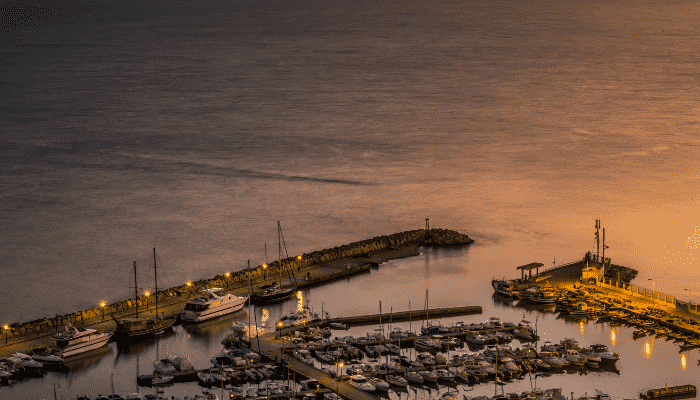

Tunis is the largest city in Tunisia that is located in the centre of Tunisia. Major goods exported from this port include fuel oil, deck, water, diesel, fish, engines, etc. It serves as the main shipping port of the country. 70% of the imports in this port are made from Europe.
It contributes to Tunisia’s economic and industrial development and helps Tunisia become the power hub of Africa.
A country is nothing without its ports that help in industrial development and contribute a lot to the region’s cultural and societal scenario.
Tunisia has become one of Africa’s industrial hubs today, and these ports have played a huge role in that from the very beginning.
You might also like to read:
Disclaimer: The authors’ views expressed in this article do not necessarily reflect the views of The Marine Learners. Data and charts, if used, in the article have been sourced from available information and have not been authenticated by any statutory authority. The author and The Marine Learners do not claim it to be accurate nor accept any responsibility for the same. The views constitute only the opinions and do not constitute any guidelines or recommendations on any course of action to be followed by the reader.










We believe that knowledge is power, and we’re committed to empowering our readers with the information and resources they need to succeed in the merchant navy industry.
Whether you’re looking for advice on career planning, news and analysis, or just want to connect with other aspiring merchant navy applicants, The Marine Learners is the place to be.